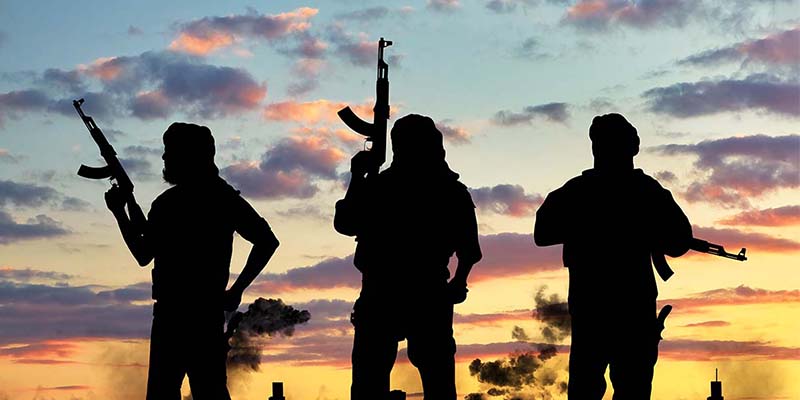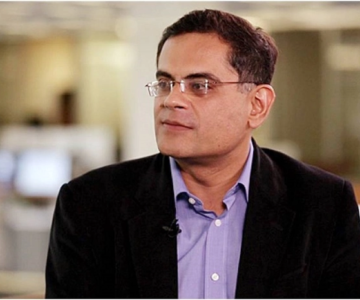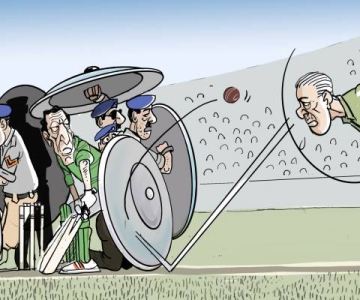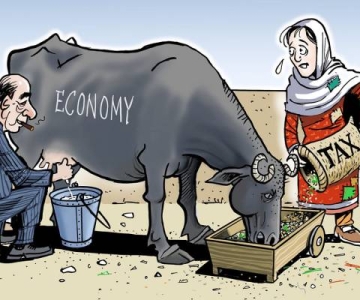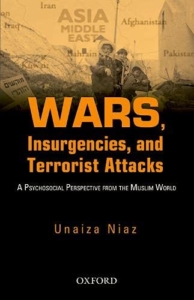 The launch of Dr Unaiza Niaz’s excellent book in September was most symbolic, as the world commemorated the ghastly incident of 9/11 and the subsequent ten years of ‘war’. The global media pundits had remarked that the world will not be the same place after 9/11. In our neighbourhood we have seen a gruesome war and occupation in Afghanistan; and its spillover into Pakistan making it a playground for terrorists of all shades and hues.
The launch of Dr Unaiza Niaz’s excellent book in September was most symbolic, as the world commemorated the ghastly incident of 9/11 and the subsequent ten years of ‘war’. The global media pundits had remarked that the world will not be the same place after 9/11. In our neighbourhood we have seen a gruesome war and occupation in Afghanistan; and its spillover into Pakistan making it a playground for terrorists of all shades and hues.
Iraq is another tragic fallout of the 9/11. A war launched by the military-industrial complex with ‘sexed up’ evidence to use the British admission has led to nearly a million people, dead, missing or invisible not to mention the wanton destruction of a country. The continued struggles in Kashmir, Chechnya and Palestine are sizzling stories of politics, high-level negotiations and bargains. However, those who have been through this mayhem remain invisible or at best random statistics. This is why Dr Niaz’s book is so important and timely: it puts forth the lost narratives, the spiraling traumas and continued dislocation and loss of bearing.
Dr Niaz’s book serves as a great framework for all those who wish to understand what happens to the victims of terrorism, war, and violence. In Pakistan we have lost over 35,000 Pakistanis to the monster of terrorism and there are hundreds and thousands of men, women, children who have been affected by this syndrome. Unfortunately, we are severely short of trauma counsellors and virtually incapable to deal with the Post Traumatic Stress Disorder (PTSD) as Dr Niaz explains in her brilliantly accessible chapters. More nuanced accounts of complex trauma and developmental trauma are also explained in detail with references and examples. In a way, this book is a vital, state of art compilation of most recent research and academic formulations on this critical subject.Another important strand in the book happens to the manner in which terrorism and its Islamic linkages have been debunked in the chapter contributed by Dr Idriss Teranti. It calls for the revival of Islam’s progressive and humane side instead of the Wahabi-Salafi onslaught witnessed these days. The book also dispels the myth that terrorists are mentally ill. The chapter on Algerian experience authored by Dr Idriss and Mohammad Chakali is a powerful account as it talks about the traumatism and resilience of people.
The situation in Afghanistan is dire. Thirty-two years of continued trauma has distorted generations and the meaning of existence there. This is an important document for them too, and everywhere in the Muslim world where war and misery have destroyed lives and homes
My favourite part of the book is the chapter co-authored by Dr Niaz and Seher Hasan entitled Insurgencies in the Muslim world. It is closer to home as well. Since 2009, I have been advising a United Nations agency on post-conflict governance and development strategies. I had a chance to visit KPK and FATA after the IDP crisis where millions had to move away from Swat, Buner and Mohmand due to military operation. Having visited the IDPs and learnt of their stories, my economic and institutional analyses seem incomplete without the essential human aspect of the post-conflict trauma. Unfortunately, the federal and provincial governments had no clue or were completely ill-equipped to deal with the lives of women trapped in their tents in the scorching heat of May and the children who had lost their parents and guardians.
During 2010, I was also a part of the Post Crisis Needs Assessment carried out by the Government with the support of the United Nations and other International Agencies. Talking to men and children of FATA (I had little access to women) the meanings of complex and developmental traumas. The ongoing conflict is a reminder for all of us to focus our attention to the citizens of FATA and KPK and how they have been dealing with the Taliban, Al Qaeda, Pakistan Army and criminal gangs who have made life a living hell for people of Pakistan.
There are strong policy implications to Dr Niaz’s research and ongoing work. There are essential gaps in state’s medical approaches and services infrastructure. We need more investments in trauma counseling, clinical and non-clinical treatments; and most importantly developing a cadre of community counsellors who can impart services at the local level where even the dysfunctional primary health services do not reach. In fact, post-stress trauma is now a primary need in parts of Pakistan. Balochistan, KPK, FATA, South Punjab where citizens and families are at great risk and vulnerable.
The chapters called Treatment Aspects of Trauma Related Conditions and the one by Saeed Farooq and Javed Akhtar make important headway and provide good lessons and evidence. If only the policy makers were open to advice and solutions that are citizen-centric and not designed to benefit the elites only.
Dr Niaz also humanizes the suicide bomber by going into the cross-national comparisons and data on the evolution of a bomber. It is important for the media and academia to pay attention to the work in this book for it will help a better counter-terrorism strategy and also provide better avenues for tackling the phenomena.
Most tragically, the situation in Afghanistan is dire. Thirty-two years of continued trauma has distorted generations and the meaning of existence there. This is an important document for them too, and everywhere in the Muslim world where war and misery have destroyed lives and homes. Dr Niaz’s book could have been edited a little better as a variety of themes have been handled and often the movement of the narratives is not smooth. Another problem with some of the chapters is informational overload. At times, there is too much data crammed into the text, which may dissuade a lay reader. Having said that, the book will prove to be useful reference material and hopefully will lead to broader debates and inquiry. OUP as always has done a fantastic job of publishing books which are not only insightful but socially and politically relevant to our times.
As I read the book, I could not help thinking of a powerful poem called A Mourning poem for Bajaur by Pakistan’s eminent poet Kishwar Naheed. This poem talks about the victims of terror and the book focuses on them too.
Coffins have become so numerous
That the city is shrinking
The eye is oozing
And not even a word of association
Like an open wound
On the lips.
The sky looks over everything
And remains silent.
Why does it go on believing
That mankind will awake once again
From its deep slumber
And laughter will ring again
On the threshold of houses.
We have the same court-yards, the same threshers
But bullets jump through them,
Riddle holes in my fields
and in the bodies of my children
Coffins have become so numerous
That the city is shrinking
(Translated from the Urdu by Asif Farrukhi)
Raza Rumi is a writer and policy expert based in Lahore. He blogs at http://razarumi.com. Follow him on twitter: @razarumi
